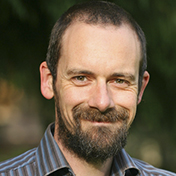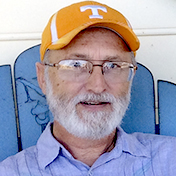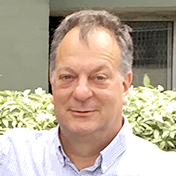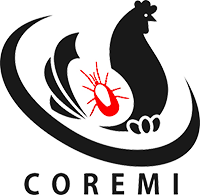COREMI
Improving current understanding and research for sustainable control of the poultry red mite - Dermanyssus gallinae
The project Improving current understanding and research for sustainable control of the poultry red mite Dermanyssus gallinae – COREMI aims to consolidate the existing expertise and knowledge on poultry red mite and to generate a synergic/holistic approach to improve health, welfare and productivity of the laying hens through more effective prevention and control of poultry red mites.
The project is funded via the European Cooperation in Science and Technology (COST) by the European Union's Horizon 2020 programme.
COREMI http://www.coremi.eu/
PROGRAM
WEDNESDAY, 20 SEPTEMBER
-
8:00 - 9:00 Welcome and RegistrationRegistration and documentation.
-
9:00 - 9:30 Opening ceremony
- Professor Doutor Nuno Canada (INIAV President)
- Professor Fernando Bernardo (Directorate-General of Food and Veterinary Medicine [DGAV]– General Director)
- Dr. Fernando Moreira (Portuguese Association of Avian Sciences [APCA] – President)
- Professor Olivier Sparagano (COREMI Chair)
-
9:30 - 10:00 Key note lecture 1
- An overview of the history, biology and control of bedbugs: what have we learned that could be applied to the poultry red mite?
Richard A. Naylor
- An overview of the history, biology and control of bedbugs: what have we learned that could be applied to the poultry red mite?
-
10:00 - 11:00 Effective and perceived epidemiology of PRM
Oral presentations (15 min each plus discussion)
- Internationalisation of research publications on Dermanyssus: myth or reality?
Olivier Sparagano, Fiona Tomley, Robert Finn, Monique Mul, Lise Roy, Danijela Horvatek Tomic, Annunziata Giangaspero [22]
- A survey on Dermanyssus gallinae in intensive poultry units in Portugal
Helga Waap, Telmo Nunes, Jacinto Gomes, Paulo Leite [6]
- Farmers’ perceptions about poultry red mite in Macedonia – findings from the Coremi questionnaire
Miroslav Radeski, Aleksandar Dodovski [10]
- Internationalisation of research publications on Dermanyssus: myth or reality?
-
11:00 - 11:30 Coffee-break
-
11:30 - 12:00 Key note lecture 2
- The ‘other’ poultry mite, Ornithonyssus sylvarium
Bradley A Mullens, Amy C Murillo, Alec C Gerry
- The ‘other’ poultry mite, Ornithonyssus sylvarium
-
12:00 - 13:20 Biology, ecology, physiology, mite-host relationship
Oral presentations (15 min each plus discussion)
- General knowledge of Dermanyssus gallinae reproduction after feeding
Ivan Pavlovic, Aleksandar Pavlicevic, JongUng Yoon, Milica Dotlic [3]
- Development of a poultry red mite on-hen feeding device: a potential tool for mite control evaluation and vectorial studies
Kathryn Bartley, Frank Turnbull, Fran Nunn, Harry Wright, Alasdair Nisbet [17]
- Characterization of mite communities in wild bird nests from south-central Spain
José Francisco Lima-Barbero, Marta Sánchez, Monica Young, Maria L. Moraza, Shira Gal, Ursula Höfle, Eric Palevsky [14]
- An integrative pilot study to assess the feasibility of conservation biological control of the poultry red mite in barn layer farms
Lise Roy, Marine El Adouzi, Maria Lourdes Moraza, Geoffrey Chiron, Etienne Villeneuve de Janti, Guénolé Le Peutrec, Olivier Bonato [26]
- General knowledge of Dermanyssus gallinae reproduction after feeding
-
13:20 - 14:30 Lunch
-
14:30 - 15:50 Available and future control methods - towards better treatments?
Oral presentations (15 min each plus discussion)
- Efficacy of a novel neem oil formulation (RP03TM) to control the poultry red mite Dermanyssus gallinae
Annunziata Giangaspero, Nicola Pugliese, Antonio Bevilacqua, Elena Circella, Marianna Marangi, Luigi Gradoni, David George, Olivier Sparagano, Antonio Camarda [9]
- Comparative in vitro susceptibility of Dermanyssus gallinae field isolates to fluralaner, phoxim, spinosad, deltamethrin and propoxur
Emmanuel Thomas, Hartmut Zoller, Gabriele Liebisch, Annie Flochlay-Sigognault [2]
- Field safety and efficacy of fluralaner in drinking water for the treatment of poultry red mite (Dermanyssus gallinae) infestations in commercial flocks in Europe
Emmanuel Thomas, Annie Flochlay-Sigognault [5]
- Introduction of Exzolt (fluralaner 10 mg/ml solution) — A new product for treatment of poultry red mite infestation in chickens
Roser Dolz [25]
- Efficacy of a novel neem oil formulation (RP03TM) to control the poultry red mite Dermanyssus gallinae
-
15:50 - 16:30 Poster session and extended coffee break
- Biological control of the chicken red mite in layer farms in Europe: state of the art and perspectives
Damien Morel, Tom Groot [1]
- Control of red poultry mite (Dermanyssus gallinae) by mechanical effect: chosen current improvements of formulations, application and concept
Aleksandar Pavlicevic, JongUng Yoon, Ivan Pavlovic [4]
- An integrative approach to the molecular and morphological identification of mites associated with the red poultry mite
Shira Gal, Eric Palevsky, Eitan Recht, Yuval Gottlieb, Efrat Gavish, Lise Roy, María L. Moraza, Eddie Ueckermann Monica Young [11]
- Description of proteomes for different fed and unfed stages of the poultry red mite (Dermanyssus gallinae)
José Francisco Lima-Barbero, Olivier Sparagano, Robert D. Finn, Lourdes Mateos-Hernández , Mariana Boadella, Ursula Höfle, José de la Fuente, Margarita Villar [15]
- In vitro effect of plant essential oils as acaricides against Dermanyssus gallinae
Monika Roczen-Karczmarz, Marta Demkowska-Kutrzepa, Jolanta Zdybel, Krzysztof Tomczuk, Maria Studzinska, Tomasz Cencek, Magdalena Wlodarczyk-Ramus [13]
- In vitro evaluation of the effectiveness of commercially available acaricides against the populations of red mites (Dermanyssus gallinae) occurring in Poland
Tomasz Cencek, Jolanta Zdybel, Magdalena Wlodarczyk–Ramus, Jacek Karamon, Marta Dempkowska-Kutrzepa, Monika Roczen-Karczmarz [23]
- Dermanyssus gallinae status in Iran: an emerging problem
Shayan Rahimian, Olivier A. E. Sparagano [24]
- The residue depletions of spinosad and abamectin in eggs of laying hens
Veli Yilgor Cirak, Cengiz Gokbulut, Mehmet Ozuicli, Levent Aydin [28]
- Results of a pilot study regarding Dermanyssus gallinae in the greek laying hen industry
Konstantinos Arsenopoulos, Athanasios Angelou, Elias Papadopoulos [29]
- Biological control of the chicken red mite in layer farms in Europe: state of the art and perspectives
-
16:30 - 18:00 WG2 individual session:WG2: End users (One Health) – an interdisciplinary approach
-
19:00 Social Dinner at “A PASTORINHA” restaurant
Avenida Marginal, Praia de Carcavelos (see map)
THURSDAY, 21 SEPTEMBER
-
9:00 - 9:30 Key note lecture 3
- Fipronil in eggs, hens and in laying hen facilities
Guillaume Counotte and Ruth Bouwstra
- Fipronil in eggs, hens and in laying hen facilities
-
9:30 - 10:50 Available and future control option: IPM strategies
Oral presentations (15 min each plus discussion)
- A practical elaboration of integrated pest management for Dermanyssus gallinae; a farmer-science co-creation
Monique Mul, Alex Visch, Dirk Lagerweij, Linda van Lith [7]
- Mite monitoring can improve hen welfare
José Francisco Lima-Barbero, Ursula Höfle, Mariana Boadella, Xavier Manteca, Monique Mül, Deborah Temple [16]
- A model forecasting the Dermanyssus gallinae population in laying hen houses using monitoring data, housing temperature and dates of treatment
Monique Mul, Johan van Riel, David George, Marcel Dicke, Bastiaan Meerburg, Johan Zoons, Lise Roy, Simon van Mourik, Peter Groot Koerkamp [18]
- The potential of an integrated PRM strategy in practice
Nathalie Sleeckx, Ine Kempen, Johan Zoons [8]
- A practical elaboration of integrated pest management for Dermanyssus gallinae; a farmer-science co-creation
-
10:50 - 11:20 Coffee-break
-
11:20 - 11:50 Key note lecture 4
- Tropical and emerging disease: new development for tackling insecticide resistance
Mark Paine
- Tropical and emerging disease: new development for tackling insecticide resistance
-
11:50 - 12:30 Resistance of mites and associated pathogenic microorganisms
Oral presentations (15 min each plus discussion)
- Preliminary results towards the molecular characterization of voltage gene sodium channel in Dermanyssus gallinae isolates
Marianna Marangi, Harry Wright, Alasdair Nisbet, Annunziata Giangaspero, Lise Roy, Kathryn Bartley [20]
- The bacterial flora of Dermanyssus gallinae and its antimicrobial resistance
Igor Stojanov, Danijela Horvatek Tomic, Ivan Pušic, Ivan Pavlovic, Dalibor Todorovic [12]
- Preliminary results towards the molecular characterization of voltage gene sodium channel in Dermanyssus gallinae isolates
-
12:30 - 13:40 Lunch
-
13:40 - 14:40 Control: Protective antigens and immune responses to PRM
Oral presentations (15 min each plus discussion)
- Understanding population genetic and antigenic diversity of the poultry red mite to improve prospects for successful vaccine development
Eleanor Karp-Tatham, Tatiana Küster, Alasdair Nisbet, Øivind Øines, Fiona Tomley, Damer Blake [21]
- Enhanced delivery of a prototype poultry red mite vaccine
Tatiana Küster, Dan Price, Alasdair Nisbet, Oivind Oines, Damer Blake, Fiona Tomley [19]
- Identification of gut antigens in Dermanyssus gallinae
James Pritchard, Tatiana Küster, Rob Noad, Dominic Kurian, Olivier Sparagano, Fiona Tomley [27]
- Understanding population genetic and antigenic diversity of the poultry red mite to improve prospects for successful vaccine development
-
14:40 - 15:50 WG3: Genetic structure in a changing world
-
15:50 - 17:00 WG4: Epidemiology, pathology, geographical mapping and surveillance tools
-
17:00-17:15 Closing Cerimony
-
17:15 City tour
Scientific Sessions
- Biology, ecology, physiology, mite-host relationship
- Resistance (including mechanisms, genetic bases, population-level studies)
- Genetic structure and spread routes
- Control: Protective antigens and immune responses to PRM in hens including genetic markers
- Control: available and future options (organic, conventional, IPM strategies including (economic) thresholds
- Epidemiology: prevalence (of mites, of resistances, of associated pathogenic microorganisms), mite proliferation prediction, effect of global warming
- Impact in poultry: Clinics, histopathology, hen health, hen welfare and egg production
- One Health: PRM on non-avian hosts
- Free session

SPEAKERS




FREE subscription but MANDATORY
all documentation included...
Complete the online form
Food and transportation costs are the participants responsibility.
Payment can be made in cash at the Conference reception or by bank transfer.
REGISTRATION FORM
MORE INFORMATION
CONTACTS:
This email address is being protected from spambots. You need JavaScript enabled to view it.
LOCAL:
Instituto Nacional de Investigação
Agrária e Veterinária, I.P. (INIAV, I.P.)
Av. da República, Quinta do Marquês
2784-505 OEIRAS - Portugal
GPS: 38°41'42.8"N 9°19'06.3"W





